|
|
|
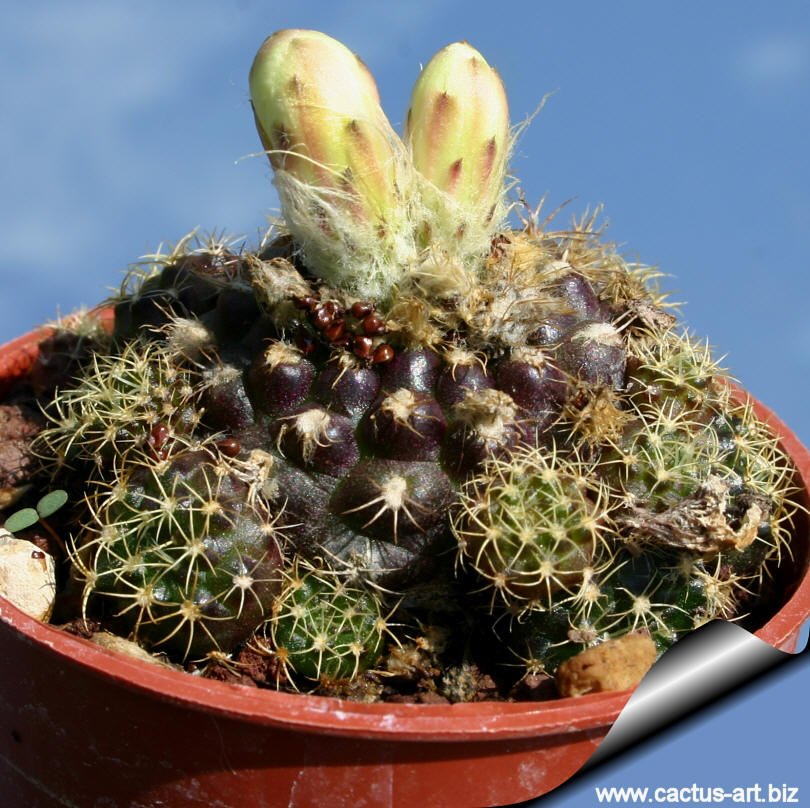
Frailea grahliana
It has dull green to purplish stems and short yellowish
or brownish spines.
Flowers will open only in great heat on the
hottest, brightest, sunny afternoon, if at all.
|
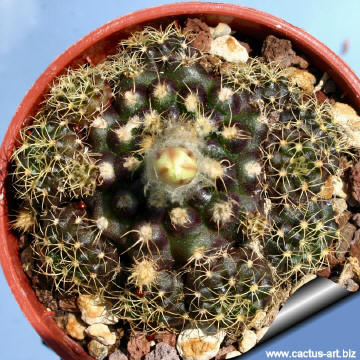
F. grahliana
is an heavily clumping species. |
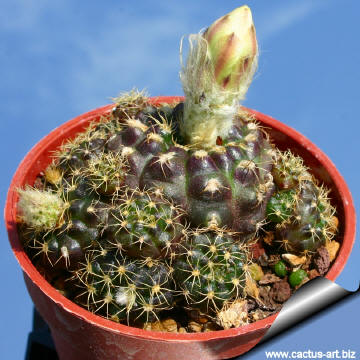
Cleistogamous and normal
Buds |
|
. |
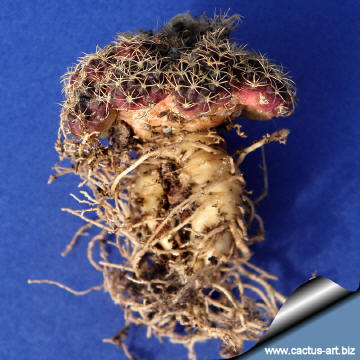 |
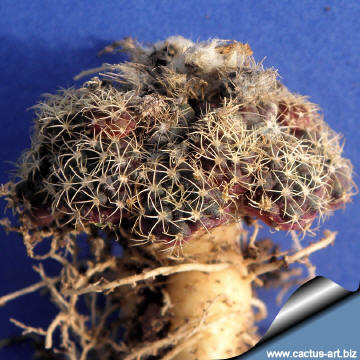 |
|
Advertising
|
|
|
|
|
|
|
Family:
Cactaceae (Cactus
Family)
Subfamily: Cactoideae
Tribe:
Notocacteae
Accepted
Scientific Name:
Frailea
grahliana (F.Haage) Britton & Rose 1922
Original
pubblication: Echinocactus grahlianus Haage jr.
In: Schumann, Monatsschr. Kakteenk. 9: 54. 1899.
Distribution:
Paraguay, Argentina.
Habitat:
Grows on flat sandstone
at the edge of plates
rocks or on clayey soil among sandstone fragments, both in open an sunny
spots and under grasses. The climate is
warm and humid
with hot
summers and much thaw during the
night. The winters
are also warm even so occasionally light frosts may occurs, but the
sandstone rocks warmth during the day and give off heat at night so
rarely the temperature at soil level go below 5°C. It grows in
association with Bromelia serra, Cererus lanosus
and Monvillea sp. (paxtoniana?) that forms
snake like stems.
Conservation status: Listed in
CITES Appendix II
Synonyms:
-
Cactus grahlianus
Kuntze
In: Deutsch. Bot. Monatsschr. 21:193. 1903
-
Frailea grahliana
ssp. concepcionensis
-
Frailea moseriana
-
Frailea grahliana
ssp. moseriana
-
Frailea grahliana
ssp.
grahliana
Was in
1897 recorded in the catalog of Haage, under the name of
Echinocactus schilinzkyana var. grandiflora.
|
|
Description:
Frailea grahliana is a common tiny and heavily clumping species
that in cultivation can easily fill a 15 cm pot. It grows quickly. This
specie is known from a very long time and its taxonomic status is quite
confuse. In habitat there are intermediate form with F. pumila
and F. friederichii and some botanists consider the
different plants of this polymorphic group as F. pumila.
Stem: Dull-green,
brownish-green to dark purple-green, top-shaped, depressed-globose, 3-4
cm in diameter
and clumping around the base.
Root: Fleshy yellowish.
Ribs: About 13 to 15 low and indistinct.
Central spines: Absent.
Radial spines: 8 to 11 yellowish, subulate, flattened on the
surface, appressed and curved backward, 3-5 mm long.
Flowers: Pale to bright yellow , up to 4 cm long. Fraileas are
cleistogamous meaning that their flowers produce seed without even
opening. Without the need for
pollination, hence the buds rarely reach full
bloom and remain closed. They will open only in great heat in the
hottest, brightest, afternoon sun, if at all.
Fruits: 6 mm in diameter,
dry
indehiscent with scales and bristles that detach easily,
pericarp
membranous, fragile that break easily releasing the seed.
This species sets fruits without opening the flowers (cleistogamy)
Seeds: Brown, smooth.
|
|
|
|
Cultivation: Grow them in
rich, porous soil and let them
dry out between waterings. These
plants need a minimum temperature of 5-10° C (but occasionally
temperatures of a few degrees below 0° are not dangerous)
Sun Exposure:
It
enjoys full sun,
and it can take on a near
black appearance when kept in bright light.
In a
shaded position the plants grow faster, but are not
flat shaped and dark coloured.
Characteristically, during the
dry season plants
retract completely
under the ground both in the
wild and in
cultivation too.
Notes: This plant is short
living (It does not live long - about 10-15 years).
Propagation:
With fresh harvested seeds or (rarely)
by
grafting.
|
|


|
|